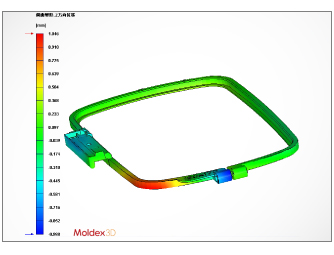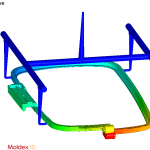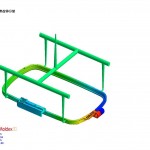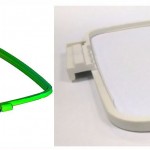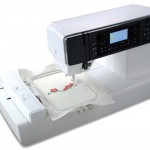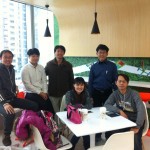Story Overview/Challenge:
Zeng Hsing is the biggest household sewing machine manufacturer in the world. Their embroidery machine combines traditional crafts and electronic technology. It requires high part quality and accuracy to assemble the machine. One of the key components is embroidery frame that requires dimensional stability and good deformation control to ensure precise positioning when embroidering, especially for the work with high degree of detail. The frame geometry itself was asymmetric and glass-filled plastic was used to strengthen its structure. At first, the frame had four gates to achieve flow balance, yet its first mold trial showed serious warpage problem. From their fishbone diagram to analyze the causes of the problem, product appearance, gate number and location, and fiber effect were the most concerned aspects. Then, the team decided to use Moldex3D in order to investigate the problem thoroughly.
Solution:
Via Moldex3D, Zeng Hsing could examine warpage thoroughly. Moldex3D helped them analyze the total effect, thermal effect, and fiber orientation effect towards the Z-displacement. They found out fiber orientation was the major reason, and this effect was missed during design phase since the traditional approach focused only on flow balance. Then, they modified the runner/gate system design six times to change the way the material filled into the cavity. Using 2-gate system, the Z-displacement could be greatly reduced by 50%. The total displacement results of the original and modified designs were proved to fit the experimental results. After that solid verification, they conducted fourteen other modifications before they eventually got the best design by which the Z-displacement could be successfully reduced by 79.5%, and it had good consistency with experiment. As a result, the designer could not only solve the problem optimally but also get better understanding of injection molding principle.
Results/Benefits:
- Reduced Z-displacement by 79.5% to meet the requirement
- Reduced development cost (repair mold) and time (mold trial and error)
- Better understanding of injection molding principle
Product Used:

|

